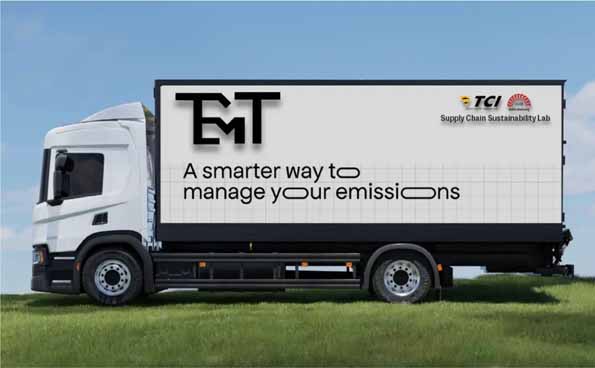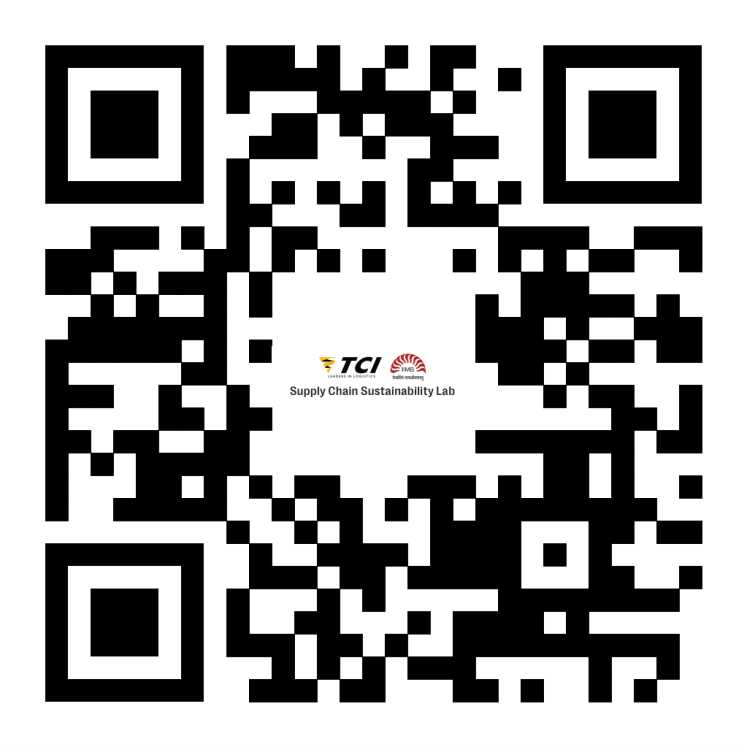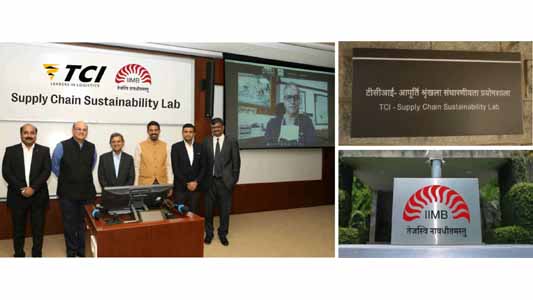Over the past few years, green manufacturing has been one of the most important global trends. Climate change and environmental degradation worries continue to rise, and companies are beginning to acknowledge their necessity to adopt the sustainable manufacturing practices. Green manufacturing is more than just decreasing energy usage and waste; it is a holistic pursuit that seeks to minimize the environmental footprint of production in a way that retains long term profitability.

Though important, there are challenges to green manufacturing. With increasing pressure from governments, consumers and other stakeholders to adopt environmentally friendly practices, organizations seek ways to comply, yet face numerous obstacles—many of which directly relate to their supply chains. It is one of the biggest hurdles due to the fact that GHG emissions are concentrated in the encompassing value chain, particularly in logistics and distribution networks. This article examines the redefined innovations in green manufacturing, manufacturers’ challenges, and relies on the solution offered by the Transportation Emissions Measurement Tool (TEMT) developed by the TCI-IIMB Supply Chain Sustainability Lab at IIM Bangalore for measuring and managing the emissions across the supply chain.
How Green Manufacturing is a Commitment to Sustainable Growth and Environmental Responsibility?
Sustainability is no longer something to disregard in the modern industrial landscape. As awareness of the impact of a changing climate continued to build, companies began to adopt green manufacturing practices — ones that reduced energy consumption, minimized waste, and cut emissions. Governments around the world are mandating more and more stringent environmental regulations, while consumers grow increasingly demanding that the products they purchase be manufactured under environmentally friendly circumstances.
With sustainability becoming a core value for businesses, manufacturers are under competitive pressure to reduce carbon footprints. This effort also includes Green manufacturing, which is the process of limiting the negative environmental impacts of production activities, thereby achieving these goals. However, manufacturers are discovering that it is not enough to limit emissions generated by their own operations.
Green manufacturing involves not only reducing emissions from manufacturing operations, but also from the entire supply chain from raw materials sourcing to the supplier’s activities and logistics operations. Manufacturers must engage with their suppliers, to ensure that sustainable practices are implemented at every step of the production process. For example, Scope 3 emissions, stemming from the operations of third party suppliers and logistics providers, is one of the greatest challenges. Manufacturers can control their own Scope 1 emissions and their Scope 2 emissions from purchased electricity, but the emissions from other partners become exceedingly difficult for manufacturers to track and manage (Scope 3).
Understanding Scope 1, Scope 2, and Scope 3 Emissions
Whether it’s in the world of green manufacturing or any other industry, companies have to be aware of the three types of emissions (scope 1, scope 2, and scope 3) because they shape what emissions are measured and managed within a company’s operations.
• Scope 1 emissions refer to direct emissions that occur from sources owned or controlled by the company, such as emissions from manufacturing processes, company-owned vehicles, and heating or cooling systems.
• Scope 2 emissions are indirect emissions resulting from the generation of purchased electricity, steam, heating, and cooling consumed by the company. These are emissions that occur at power plants but are linked to the company’s energy consumption.
• Scope 3 emissions are all other indirect emissions that occur along the value chain. These emissions are not directly controlled by the company but arise from activities such as the procurement of raw materials, transportation, distribution, product use, and disposal. Scope 3 emissions can represent the largest share of a company’s carbon footprint, and they often account for a significant portion of the emissions in green manufacturing, making them the most challenging to control.
While Scope 1 and Scope 2 emissions can often be measured and controlled within the confines of a company’s operations, Scope 3 emissions involve a broader and more complex network of external suppliers, logistics providers, and distributors. Companies must look beyond their own operations and engage with their suppliers to address emissions in the supply chain.
The Key Challenge: Logistics Services and GHG Emissions Tracking landscape in India

For manufacturers in India, one of the major contributors to their overall GHG emissions comes from logistics services. In fact, logistics and freight transportation account for 14-15% of the GHG emissions in the Indian manufacturing sector. This proportion is significant, given that freight transportation alone is responsible for about 40% of the CO₂ emissions in the transportation sector.
The logistics sector in India is growing rapidly as the economy expands, and trade volumes continue to rise. While this growth is positive for business, it poses a major challenge in terms of sustainability. Without intervention or cleaner technologies, transportation emissions are projected to increase by 4-fold between 2016 and 2050, potentially reaching 1.17 billion tonnes of CO₂ by 2050 and would increase the share of transport in total emissions to 19%. Without addressing emissions from logistics operations, it will be impossible for India to meet its climate goals and international commitments.
India’s logistics sector is diverse, involving multiple modes of transportation including road, rail, air, and maritime shipping. Each of these modes has a different environmental impact, with road transportation typically being the largest contributor to GHG emissions. The lack of standardized emissions data from logistics providers makes it difficult for manufacturers to evaluate the full scope of their emissions from transportation. This lack of visibility presents a significant barrier to reducing emissions across the supply chain.
The Challenge of Visibility and Control across the Supply Chain

One of the primary challenges for tracking Scope 3 GHG emissions that manufacturers face is the lack of visibility, especially when working with third-party logistics providers and suppliers.
Many organizations lack an easy-to-access, cost-effective way to track and measure emissions from their suppliers and logistics providers based on the origins & destination locations, routes, transportation mode etc. Without this crucial data, manufacturers cannot effectively identify where emissions are being generated nor
decide upon the greenest mode of transport which is critical for implement strategies to reduce excess emissions. Furthermore, the complexity of the supply chain, lack of trust-worthy accounting based on India- specific transportation & fuel factors, combined with inconsistent reporting and data standards, makes it difficult to aggregate emissions information in a way that is meaningful and actionable.
As a result, while manufacturers may be able to control their direct emissions, they struggle to manage and reduce emissions across their entire supply chain. This is where innovative solutions, like the Transportation Emissions Measurement Tool (TEMT), come into play.
How the Transportation Emissions Measurement Tool (TEMT) Solves the Problem?
The Transportation Emissions Measurement Tool (TEMT), developed by the TCI-IIMB Supply Chain Sustainability Lab at the Indian Institute of Management Bangalore (IIMB), is designed to address the challenges of tracking and managing emissions from freight transportation. TEMT provides manufacturers with a digital platform that helps to measure and report GHG emissions from their logistics operations in a comprehensive, standardized, and easy-to-use manner.
TEMT stands out because it is specifically tailored to the Indian context, integrating India-specific emission factors such as terrain, fuel mix, and climatic conditions. This makes it a much more accurate and relevant tool for Indian manufacturers compared to global emissions calculators that rely on European or international standards.
Key features of TEMT include:
• Cross-mode Emission Measurement: TEMT tracks emissions across all modes of transportation—road, rail, air, maritime, and inland waterways—ensuring that all aspects of a company’s logistics operations are covered.
• India-Specific Customization: TEMT is tailored to the unique environmental and logistical challenges of India, making it a highly relevant tool for Indian businesses.
• Past & Future Emission Calculations: TEMT allows businesses to calculate both past emissions and future projections, helping them develop effective emissions reduction strategies.
• Comparative Emission Analysis: TEMT enables companies to compare emissions from different transportation modes, allowing them to make more sustainable decisions about logistics.
• Cloud-Based and Accessible: TEMT is a cloud-based platform, making it accessible to businesses of all sizes, from large corporations to small and medium-sized enterprises (SMEs). The platform is easy to use, making it scalable and cost-effective for companies at every stage of their sustainability journey.
By using TEMT, businesses gain much-needed visibility over their logistics emissions, including those from third- party service providers. The tool empowers manufacturers to track emissions, evaluate sustainability performance, and take targeted actions to reduce their carbon footprint.
Conclusion
Green manufacturing is no longer just a trend; it is an imperative for businesses seeking to thrive in a sustainable economy. However, as manufacturers work to reduce their environmental impact, they must also navigate the complexities of managing emissions across their entire supply chain.
Innovations like TEMT are helping businesses overcome the challenges associated with tracking and managing emissions from logistics and supply chains. By providing a platform that offers detailed, accurate, and India- specific emissions data, TEMT empowers manufacturers to make informed decisions and take effective action to reduce their carbon footprint.

As the global push for sustainability continues to grow, the future of manufacturing will depend on the ability of businesses to adapt and innovate. By leveraging tools like TEMT, manufacturers in India and around the world can take meaningful steps toward achieving their sustainability goals while enhancing operational efficiency and remaining competitive in an increasingly environmentally conscious market. With the right strategies, technologies, and commitment to sustainability, green manufacturing can become a key driver of both environmental and economic success.
Scan the QR or click on the link below to calculate the freight emission today.
https://iimb.freightemissions.com/

Profile – Dr. Aditya Gupta is the Chief Operations Officer, TCI-IIMB Supply Chain Sustainability Lab at the Supply Chain Management Centre of IIM Bangalore. Dr. Gupta’s areas of expertise include Carbon Accounting, Supply Chain Sustainability, Corporate ESG management and Circular Economy.
(17) Dr. Aditya Gupta | LinkedIn
About TCI-IIMB Supply Chain Sustainability Lab –
India’s leading integrated multimodal logistics and supply chain solutions provider, Transport Corporation of India Ltd. (TCI Group), in collaboration with Indian Institute of Management Bangalore, one of the country’s premier management schools; has established the sustainability lab at IIMB campus with a focus on supply chain management. This is one-of-its-kind centre of excellence in sustainable supply chain practices, dissemination and advocacy. The lab was inaugurated by renowned Indian cardiac surgeon Dr. Devi Shetty, Chairman and ED of Narayana Health, and Chairperson, Board of Governors, IIM Bangalore along with the Chairman of TCI Group, Shri. DP Agarwal Ji & Mr. Vineet Agarwal, MD – TCI on 28th April, 2023.

Follow us for more info.












